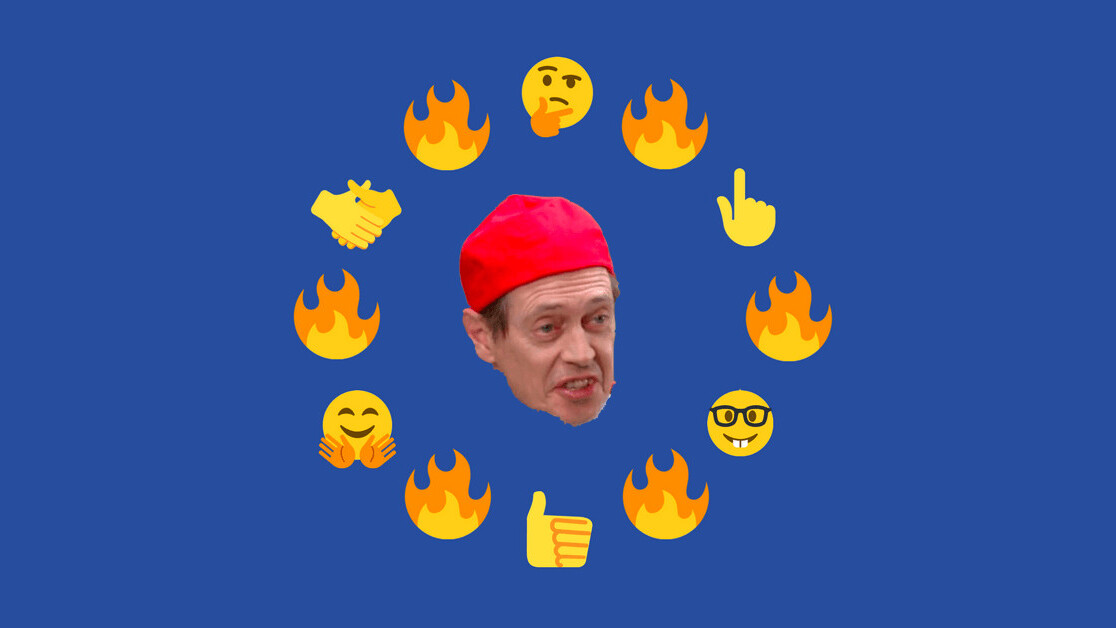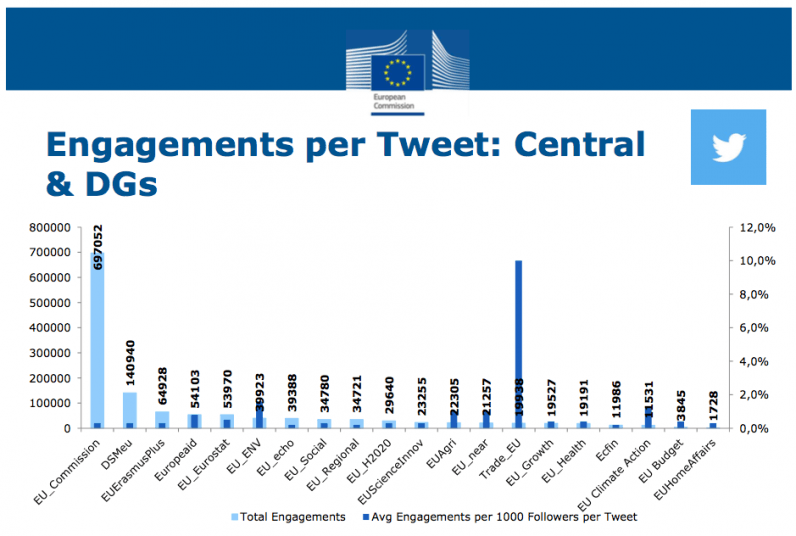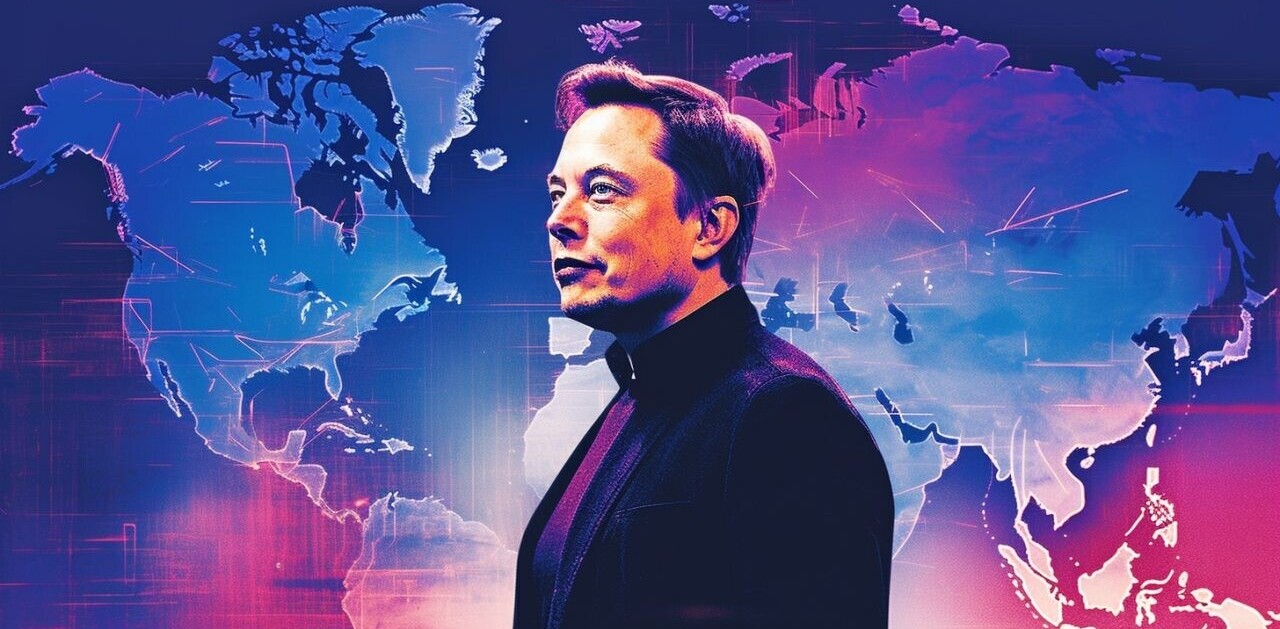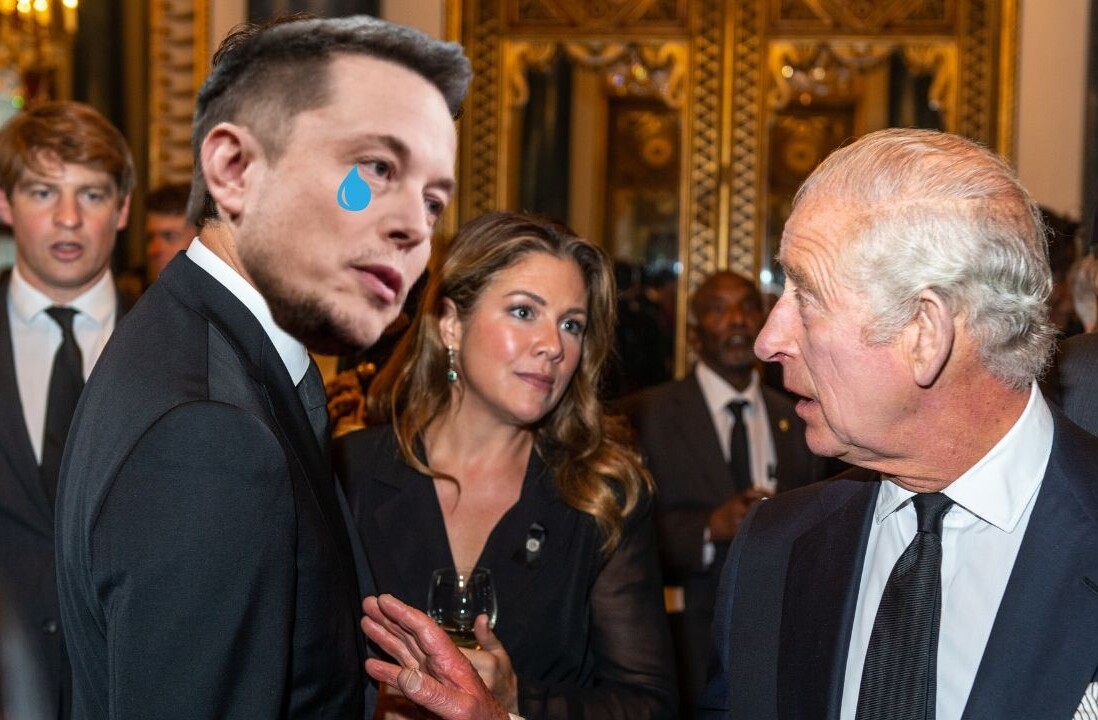
The EU isn’t exactly known for its ability to relate to young people, being the massive and cumbersome governmental institution it is. That’s why I was pleasantly surprised when I came across this tweet the other day:
???? #EUtrade transparency at work: We’ve published our negotiating textual proposals for a modernised trade deal with Chile. ? https://t.co/dULZSnRcn6 pic.twitter.com/FFUwvOUCYD
— EU Trade ?? (@Trade_EU) February 6, 2018
I follow a lot of official EU social media accounts, but I had never seen any of them use pop culture GIFs like EU Trade does — the official Twitter account of the EU Commission’s International Trade Department. I started imagining that somewhere, deep down in the bureaucratic catacombs of the EU, there was a text filled with institution jargon outlining ‘cool’ ways to use Graphic Interchange Formats to reach the continent’s younger demographics.
To find out more, I tracked down the person behind the EU Trade’s GIF and emoji usage, Ariel Delvecchio, who is one of the most adamant emoji/GIF evangelists within the EU.
“I’ve been systematically promoting the use of emoji and GIFs since 2015 and when I started there was nobody else doing it,” explains Delvecchio.
“GIF use is a conscious part of our communication strategy here at DG TRADE, and that’s just the latest incarnation of what we’ve been doing for the past three years. You could say that we have a tradition of being ahead of the institutional curve when it comes to digital communication — it started with a very engaging account of the EU TTIP Team, and continued with us being the first institutional account to systematically adopt the use of emoji in a communication strategy — probably the first governmental institutional account in the world. We’ve also been systematically using GIFs since 2016.”
The first GIFs were much tamer and uninteresting, but it’s obvious that Delvecchio and his team have grown bolder lately and have started embracing GIFs with more pop culture references — like normal people use them.
Basically, from generic GIFs like this:
? Learn about our latest work on the Multilateral Investment Court. Register now for the meeting on 20 November. ⚖️? https://t.co/7TmO5JGYiL pic.twitter.com/FBcHfgE50u
— EU Trade ?? (@Trade_EU) October 23, 2017
To this:
We have a new deal for modernising #EUtrade defence! ?
✅ Harder measures if needed. ✅ Better support for small companies. ✅ Faster response times. ✅ Stronger emphasis on transparency. More info ? https://t.co/JAqEFbZOd7 pic.twitter.com/0mQWVRwS98— EU Trade ?? (@Trade_EU) December 6, 2017
The two unofficial EU languages: Emoji and GIFs
The EU’s use of emoji and GIFs actually makes sense within the union’s broader vision. The EU is all about communicating in and translating between multiple languages, whether they’re traditional are not.
“You can see emoji and GIFs as two extra languages,” says Delvecchio. “They’re perhaps not official but I’d like to argue that they’re equally important as the official languages. When you use emoji or GIFs, almost any person from any country — regardless of which languages the speak — can relate to it and understand that message.”
This actually makes sense as most of us use visual ways to express ourselves every single day. Even my grandmother uses emoji, so why shouldn’t the EU? Especially when being fluent in these languages really pays off.
Delvecchio has seen it clearly in the data that embracing emoji usage has pumped up engagement numbers considerably and that’s why the use of GIFs should be increased as well. GIFS and emoji don’t dilute the message at all, in fact, the opposite is true: They amplify it.
“The tweets containing emoji — we have more reliable data on that than the GIFs — had up to six to eight percent engagement rates in 2015/16 and around four percent afterwards — contrasting that with the average for normal tweets being one percent. Interestingly, since then the engagement trend in emoji tweets is slowly getting lower, possibly due to a more widespread use of emoji and hence saturation from all sides by the followers.”

But if these visual ways of communicating are able to transcend borders and engage people more, does Delvecchio believe we’ve found the new Esperanto? A new universal language?
“I believe that emoji/GIFs are not the new Esperanto, they are the old Esperanto, much older than writing itself. I see them as a technology-enabled digital form of the primordial visual language that doesn’t even require knowing a language to understand it because it’s already embedded in us — to a large extent. That’s where the true power of emoji, GIFs, and memes in general lies.”
The Emoji (and GIF) Union and the final frontier
To my great dismay, I found out that the EU doesn’t in fact have official guidelines tucked away somewhere, detailing which emoji to use or what kind of GIFs are likely to reach millenials. However, Delvecchio did confirm that he and his team have some internal ones — and some other EU institution might as well — where they collect their knowledge on what type of tweets and emoji/GIF usage has proven to work.
Unfortunately he couldn’t share the full guide with me — highly classified emoji business and all that — but Delvecchio says people at the EU are trying to be more open and forthcoming about their work as an institution and that emoji and GIF usage has helped them do it. But if there are any EU employees out there that want to leak emoji/GIF guidelines, you know where to find me.
Delvecchio also hosts official workshops for other EU employees, being the evangelist he is, to get more people to push the envelope of institutional communication by pumping it full of emoji, GIFs, and hopefully someday, memes.
“I’d definitely say that using memes at some point is one of our goals. We’re trying to get into it, but it’s not going to be easy as it’s a more sensitive issue. We mostly tweet about bilateral relations, like trade deals, so getting approval from all parties could be tricky,” says Delvecchio. Unfortunately he doesn’t have the support right now within EU but memes are definitely a part of his long term strategy.
It’s understandable that it’s difficult to implement meme usage, as there’s definitely a fine line between ‘how do you do, fellow kids’ and a ‘sick meme game.’ So we might need to wait a few years before seeing a fresh meme dump from an EU institution.
???? #EUtrade mission: 4th round of trade talks with Indonesia. Status: Success! ? We’ve had progress in these areas: Food & plant health, investment, services and technical barriers to trade. ? https://t.co/6wq2sdsFTb pic.twitter.com/OAjv2fNei9
— EU Trade ?? (@Trade_EU) February 27, 2018
However, before crossing the final meme frontier, the GIF usage needs to be perfected, but could it be that the EU itself would stop that from happening? I asked whether the EU’s current rigorous copyright reform — which people are already worried about — might restrict the usage of pop culture GIFs, like Delvecchio’s beloved Disney ones.
“I only wish that there will be enough prudence to make sure we can keep on using these timeless GIFs — when it comes to meaning, archetypes, and symbolism, there’s little that surpasses the versatility of Disney GIFs.”
Fortunately, there’s no way that it will effect emoji, which are still close to Delvecchio’s heart. He loves it every time new emoji are released but there’s one in particular that he feels needs an upgrade — that would be especially useful for accounts like the EU Trade — the handshake emoji. ?
“I really like the handshake emoji because it symbolizes straightness and the handshake ‘seals the deal.’ But I wish that the handshake was designed a bit better, at least on Twitter. I think the hands should be a little bit bigger and made like they’re actually ‘coming together,’ instead of being this illegible little emoji blob,” Delvecchio explains.
I personally am really glad that there’s somebody within the massive infrastructure of the EU fighting to make it a bit more human. It’s made up of people like us, so it should also relate to us. And if there’s one thing we’ve learned from our constant online presences is that all humans speak GIF and emoji.
However, I’m also somewhat saddened by the EU’s humanity. I was really hoping to find a dreary legislation-like text determining what constituted as ‘lit’ or ‘woke’ GIFs and emoji. Maybe someday my bizarre dream of institution speak merged with internet culture will become a reality.
Get the TNW newsletter
Get the most important tech news in your inbox each week.





